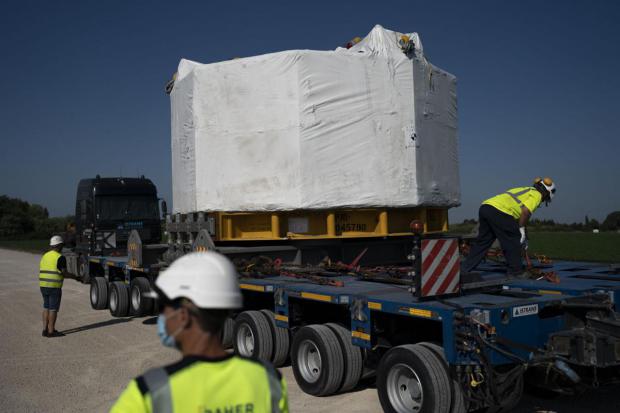
Breaking News
SEMI-NEWS/SEMI-SATIRE: January 11, 2026 Edition
 "Appalling": Debanking Explodes To Record High In Britain
"Appalling": Debanking Explodes To Record High In Britain
 MTG explodes in astonishing f-bomb laden tirade as Trump orders Secret Service probe:
MTG explodes in astonishing f-bomb laden tirade as Trump orders Secret Service probe:
 "World's Criminals On Notice": Trump's Gunboat Diplomacy Seizes Another Tanker In
"World's Criminals On Notice": Trump's Gunboat Diplomacy Seizes Another Tanker In
Top Tech News
 World's most powerful hypergravity machine is 1,900X stronger than Earth
World's most powerful hypergravity machine is 1,900X stronger than Earth
 New battery idea gets lots of power out of unusual sulfur chemistry
New battery idea gets lots of power out of unusual sulfur chemistry
 Anti-Aging Drug Regrows Knee Cartilage in Major Breakthrough That Could End Knee Replacements
Anti-Aging Drug Regrows Knee Cartilage in Major Breakthrough That Could End Knee Replacements
 Scientists say recent advances in Quantum Entanglement...
Scientists say recent advances in Quantum Entanglement...
 Solid-State Batteries Are In 'Trailblazer' Mode. What's Holding Them Up?
Solid-State Batteries Are In 'Trailblazer' Mode. What's Holding Them Up?
 US Farmers Began Using Chemical Fertilizer After WW2. Comfrey Is a Natural Super Fertilizer
US Farmers Began Using Chemical Fertilizer After WW2. Comfrey Is a Natural Super Fertilizer
 Kawasaki's four-legged robot-horse vehicle is going into production
Kawasaki's four-legged robot-horse vehicle is going into production
 The First Production All-Solid-State Battery Is Here, And It Promises 5-Minute Charging
The First Production All-Solid-State Battery Is Here, And It Promises 5-Minute Charging
 See inside the tech-topia cities billionaires are betting big on developing...
See inside the tech-topia cities billionaires are betting big on developing...
Fusion startup builds 10-foot-high, 20-tesla superconducting magnet

In 2015, a group of physicists at MIT did some calculations to rethink how we're approaching the problem of fusion power. High-temperature, nonmetallic superconductors were finally commercially available and could allow the generation of stronger magnetic fields, enabling a simpler, more compact fusion reactor. But the physicists behind the work didn't stop when the calculating was done; instead, they formed a company, Commonwealth Fusion Systems, and set out to put their calculations to the test.
On Tuesday, Commonwealth Fusion Systems announced that it hit a key milestone on its quest to bring a demonstration fusion plant online in 2025. The company used commercial high-temperature superconductors to build a three-meter-tall magnet that could operate stably at a 20-tesla magnetic field strength. The magnet is identical in design to the ones that will contain the plasma at the core of the company's planned reactor.
Aggressive roadmap
Giving yourself less than 10 years to solve a problem that an entire research field has been struggling with for decades is ambitious, but it reflects how relevant fusion could be to the climate crisis we're facing. Several of the company's leaders mentioned climate change as an inspiration for their work.

 Storage doesn't get much cheaper than this
Storage doesn't get much cheaper than this

